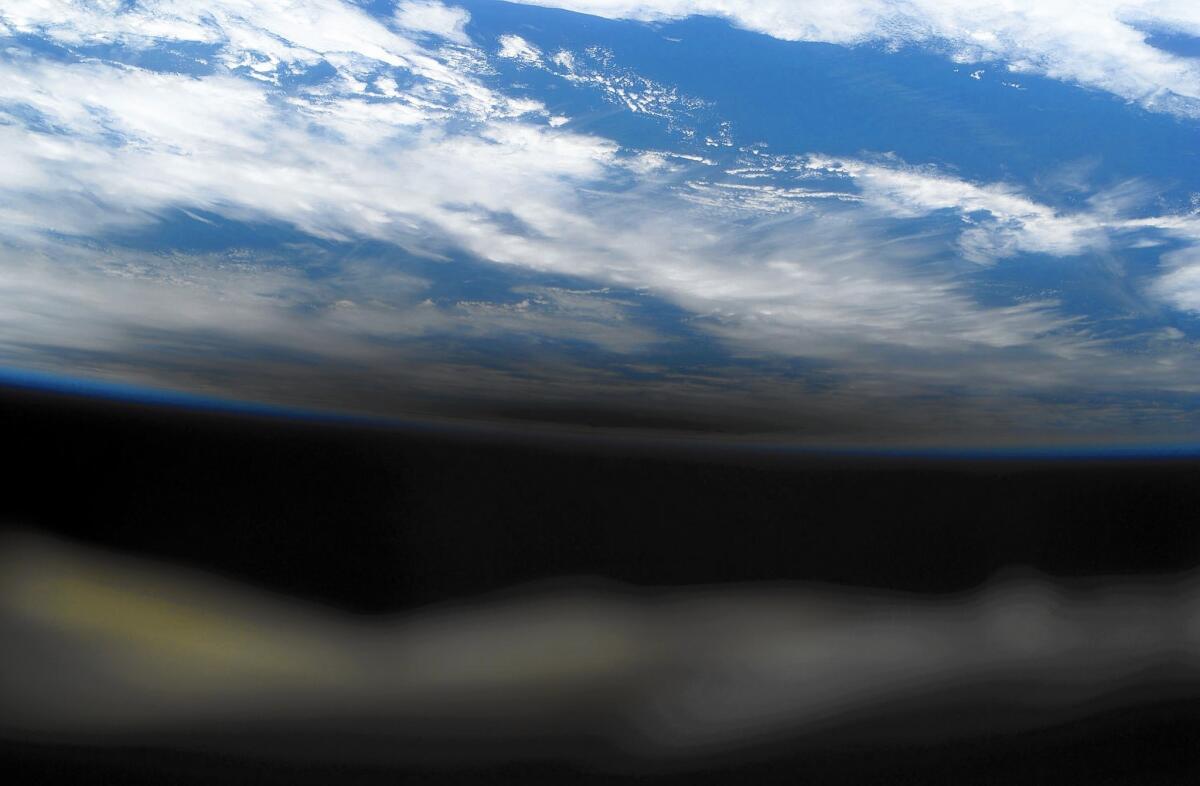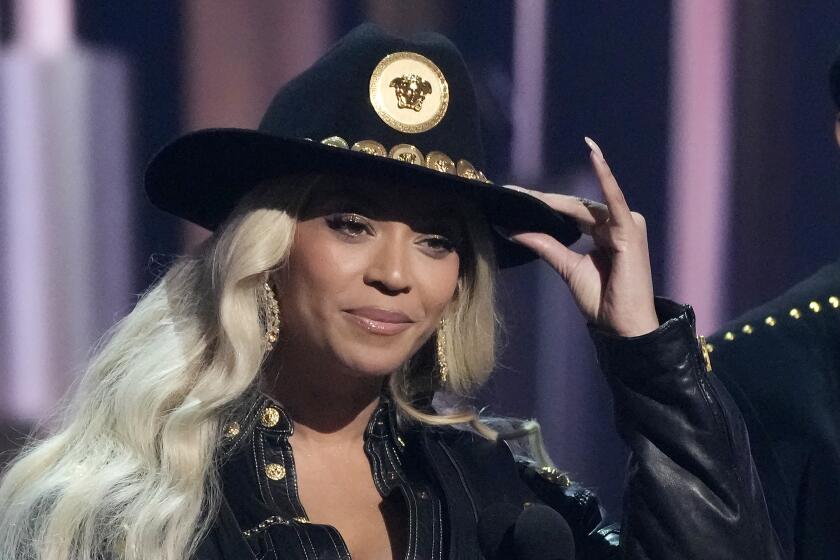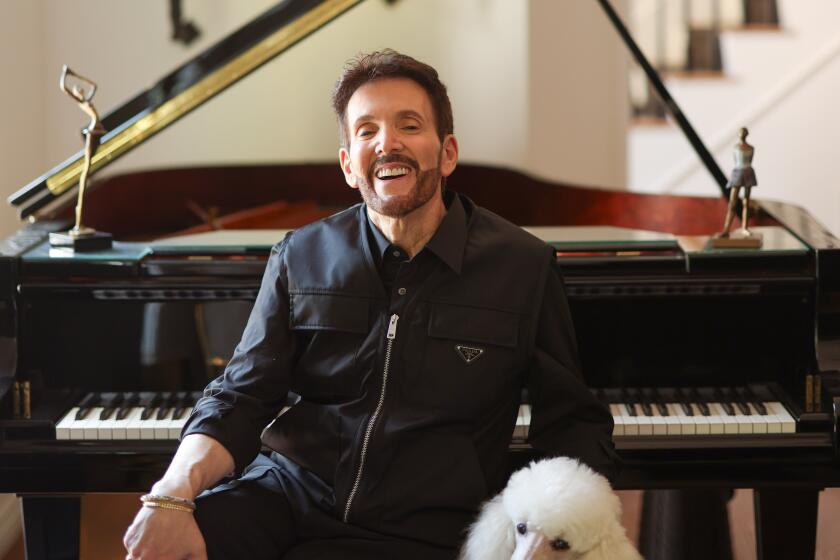The arts become Earth-aware: Dawning age of what are known as eco-arts

In his most recent book, “The Meaning of Human Existence,” Harvard biologist E.O. Wilson challenges the humanities to stop being in effect so darn man-crazy.
“Anthropocentricity” is the precise term for the cramped view that divorces humankind from the natural world that gives it life. It shouldn’t take the world’s leading expert on ants to point out that this perspective — rampant not just in Congress and churches but in colleges and the cultural marketplace — has deadly consequences for the flora and fauna sustaining us.
The main problem Wilson has with the humanities is intellectual myopia: “Confined to a small box of awareness, they celebrate the tiny segments of the continua they know, in minute detail and over and over again in endless permutation. These segments alone do not address the origins of the traits we fundamentally possess — our overbearing instincts, our moderate intelligence, our dangerously limited wisdom, even critics will insist, the hubris of our science.”
Wilson evinces a fair amount of hubris himself in this short yet overreaching book, which in addition to proposing some thoughts on the age-old question of why we exist, runs roughshod on religion and even ventures a sketch of what outer space aliens might look like. But at a perilous time in the evolutionary history of our species, when climate change threatens not just our way of life but life itself for countless organisms, Wilson’s central critique cannot be ignored.
Artists and scholars are quick to pay lip service to the environmental catastrophe underway, but what’s needed is a response to Wilson’s clarion call in their work — a greening if you will of arts and letters. This is the goal of the burgeoning eco-arts and eco-criticism movement, which has slowly been gaining respectability in the academy.
New modalities are overdue. Upholding the traditional dichotomy between culture and nature is untenable in an epoch so geologically unique it has been dubbed the “Anthropocene.” This designation reflects the way human activity has been effecting large-scale environmental changes on Earth, setting in motion a crash in biodiversity, the urgent subject of Elizabeth Kolbert’s “The Sixth Extinction: An Unnatural History,” the must-read popular science book of 2014.
While it makes sense that the humanities would be focused on human endeavor, Wilson’s complaint that they have been besotted with philosophy, social science and religion at the expense of hard scientific fact is difficult to argue with. As a theater critic, I can attest that a grounding in morals and metaphysics occasionally comes in handy when analyzing dramatic literature. But a knowledge of evolutionary biology or earth science might be, as Masha says in Chekhov’s “The Three Sisters” about knowing three languages in her Russian backwater, “a useless luxury ... not even a luxury, but a sort of unwanted appendage like having a sixth finger.”
Yet the patent absurdity of pretending that flesh-and-blood man is either purely a social construction or an inexplicable miracle has long been recognized. In “Human, All Too Human,” Nietzsche, eager to disabuse us of the notion that humans are somehow “more than nature,” poses a provocative question: “Error has transformed animals into men; is truth perhaps capable of changing man back into an animal?”
Darwinian principles have taken humanists only so far, however. A language barrier persists. In his 1980 essay “Exeunt the Humanities,” cultural historian Jacques Barzun suggests that an underlying problem in the field may be overspecialization. He decries the way the study of literature and the arts has been morphing into quasi social science, a “purely technical” approach that has arisen in response to pressures to justify disciplines along professional lines (a trend that has only intensified in our stridently vocational age, in which college majors are increasingly granted prestige according to their future earning potential).
“By becoming ‘subjects’ grouped over against other subjects termed nonhumanistic, the humanities inevitably become specialties like those other subjects,” Barzun writes. “And thus their original purpose has been perverted or lost.”
That original purpose could be characterized as the proper education of civilized man or woman, trained in patterns of thought and feeling that find wisdom in intellectual synthesis. The liberal arts need to return to their interdisciplinary roots. Climate change, artificial intelligence and advances in neurobiology are forcing us to rethink what it means it be human. The humanities cannot turn a blind eye to these scientific concerns and stay relevant.
The theater is a natural place for expanding the purview. Western drama has from its origins in ancient Greece been peculiarly preoccupied with ontology, the nature of being. Sophocles’ “Oedipus Rex” offers a meditation on the fragile estate of mankind operating in a world whose larger design remains inscrutable. In “Hamlet,” Shakespeare takes time out to ponder how man, “the paragon of animals,” can at the same time be “this quintessence of dust.”
It is true that our greatest tragedians have been more consumed with existential abstraction than with bodily reality. A primary theme of Greek tragedy is the justification (or absence of justification) of the gods to men. Even the most salient modern dramas, written in the wake of Nietzsche’s proclamation of the death of God, seem to fixate on the void left by the overthrow of theological authority.
On stage, the social world has long eclipsed the natural world, which has tended to remain on the periphery of consciousness. Hacked down trees and slaughtered birds are easy enough to find in Ibsen and Chekhov, but their presence when prominent tends to be symbolic, a reflection of the human world and hence subordinate. But this needn’t be immutable.
Our art reflects not just our priorities but our framework for understanding. Wilson argues that our lack of interest in anything but ourselves was acceptable when “there was still enough time and room to tolerate a large margin of error. Those happy days are gone.”
The moment has come to treat human nature as the double-barreled term it is, to include some recognition of prehistory in our timelines and to factor in the origins of our relatively young species when analyzing behavior.
“It is within the power of the humanities and the serious creative arts within them to express our existence in ways that begin at last to realize the dreams of the Enlightenment,” Wilson argues. In his utopian vision, “the relation between science and the humanities should be at the heart of liberal education everywhere, for students of science and the humanities alike.”
Una Chaudhuri, an English and drama professor at NYU who is a pioneer in the fields of eco-theater and eco-criticism believes the walls between the arts and science may be coming down.
“A great shift is finally happening — in theater and in culture at large (largely under pressure from the effects of climate change) — and a more capacious, bio-centric and inter-species awareness is on the rise,” she wrote in an email exchange. “The greatest playwright of this new consciousness is Caryl Churchill, with Wallace Shawn and Edward Albee close behind.”
In plays such as Churchill’s “Far Away,” Shawn’s “Grasses of a Thousand Colors” and Albee’s body of work from “The Zoo Story” through “Seascape” to “The Goat, or Who is Sylvia?,” Chaudhuri finds evidence of the new eco-consciousness. Dramatists, writing in the shadow of the new apocalyptic threat of ecological disaster, aren’t simply importing themes — they are forcing us to reconsider our fundamental aesthetic, ethical and metaphysical orientations.
In her groundbreaking 1994 article in Yale’s Theater magazine, “‘There Must Be a Lot of Fish in That Lake’: Toward an Ecological Theater,” Chaudhuri points out the first stages of “a remapping of humanism,” beginning with “a conviction that the natural world is no more primarily a source of symbols and metaphors for the human condition than it is merely a source of raw materials for our consumption. It has an independent existence and an autonomous power that makes us its creatures and subjects.”
When I brought up the notion of eco-theater to a colleague of mine, she jokingly wondered whether I was hankering for grand epics about polar bears. No. Nor am I calling for stirring tales of dogged conservationists or tear-jerkers about a boy and his horse or theatrical lectures on the imperative of switching to renewable energy sources. (I agree with such a position, though I don’t think public service announcements masquerading as theater will have much effect.)
The works I’m envisioning are those like Rajiv Joseph’s “Bengal Tiger at the Baghdad Zoo,” in which the depravity of contemporary geopolitics is thrown into relief by the ghost of a philosophizing big cat, or Ronnie Burkett Theatre of Marionettes’ “Penny Plain,” in which environmental catastrophe is the new normal, or the music-theater collages of Laurie Anderson that locate the troubled zeitgeist in landscapes.
But most of all, I’m looking for artists to lead us into an expanded awareness of what it means to be human and to reformulate our paradigms for understanding our relationship to the rest of the planet.
Wilson has little patience for religious leaders who foist upon us “supernatural explanations of human existence” and actively block the “more realistic worldview” of scientists. But as Wilson himself acknowledges, it is artists and storytellers, not scientists, who can potentially reconcile the viewpoints of the priest with those of the entomologist, who can expose the shortcomings in both perspectives and complicate deterministic philosophies, be they conveyed in the jargon of biology or the rhetoric of Scripture.
Eco-consciousness is on the rise in all the arts, from mainstream films such as “Avatar” (which admittedly has its share of eco-critics) to popular music, such as Joni Mitchell’s somberly contemplative album “Shine.” But like our efforts at conservation it is not happening fast enough to keep pace with the rate of meteorological havoc, rising sea levels and faltering wildlife. The arts and humanities aren’t the place to look for solutions to the climate change crisis, but in taking up Wilson’s challenge to join hands with science, they may be our best hope of shifting public consciousness substantially enough to give our descendants a fighting chance.
More to Read
The biggest entertainment stories
Get our big stories about Hollywood, film, television, music, arts, culture and more right in your inbox as soon as they publish.
You may occasionally receive promotional content from the Los Angeles Times.











